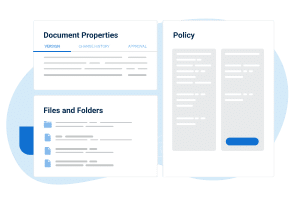When the ISO 14001:2015 standard was released, it offered several fundamental changes to the 2004 version. One of these is a greater focus on the need for increased strategic risk management to replace and improve the previous system that relied more on a “reactive” preventive action process.
Another fundamental change is the increasing involvement of top management in this process. These changes may not sound dramatic, but they require organizations to demonstrate evidence of increased and improved strategic risk planning and execution. More importantly, what impacts do these changes have on the environment when executed correctly?
Preventive measures versus strategic risk management
The ISO 14001:2004 standard relied on risk assessment along with corrective and preventive actions to minimize the impact that a business has on the environment; however, the ratios in which the above were expected to be performed were not specified. The 14001:2015 standard replaced the “preventive action” with “increased risk management.” Therefore, the focus moved from preventive actions, which may be less effective because they may be carried out by only certain individuals within an organization, to risk management, which should be a more thorough process due to input and commitment from multiple stakeholders, with a heightened sense of importance due to the change in the standard. Also, if you have to provide a corrective action, you are reacting to an event that has already occurred. The current standard aims to prevent these incidents by the use of risk management and proactive risk assessment.
The aim of strategic risk management is to focus the organization’s top management and team to spend more time assessing, researching, and understanding aspects that may present risk to the environment, and to execute these actions before any environmental impact is felt, as opposed to during or after.
Risk management: The key environmental benefits
It is clear that ISO 14001:2015 was designed to ensure that a proactive, measured, and strategic outlook is taken toward environmental concerns. The key benefits to the environment should come from a major bias toward identification and prevention of incidents, rather than reactions to events. This focus has a hugely positive effect on the environment and the legacy we leave for future generations. With the collective improvements of ISO 14001, accredited and compliant organizations throughout the world are better able to positively impact the planet we live on and the resources we leave for others.
Risk management: The benefit to your organization
Consider how the typical organization’s Environmental Management System was likely run in the past. The management review process would have directed the path in terms of overall targets and goals, but the team often carried out the vast majority of the “plan, do, check, act” day-to-day work (see also: Plan-Do-Check-Act in the ISO 14001 standard).
The swing toward strategic planning of how to assess environmental aspects, through involvement of the management team, helped to create a fundamental change in environmental performance. Now it is normal for the whole management team to think about any aspects that may affect the business and discuss how these risks will be managed, mitigated, and removed. Many environmental aspects, which in time become incidents, are costly not only to the environment, but also to a business. Most organizations now see a definitive improvement in this area of performance criteria, resulting in improved environmental key performance indicators. Constant review, adjustment, and continual improvement will ensure that this cycle continues. Prevention, with the help of forward planning and risk management, is much better than a cure.
In summary, an increased shift toward strategic risk management results in benefits both to the planet and to the financial performance of those organizations that prioritize it. The benefits of risk management in ISO 14001:2015 are evident. The best time to implement ISO 14001 was yesterday; the second-best time is today… what are you waiting for?
To implement ISO 14001 easily and efficiently, use our ISO 14001 Premium Documentation Toolkit that provides step-by-step guidance and all documents for full ISO 14001 compliance.

 John Nolan
John Nolan 


